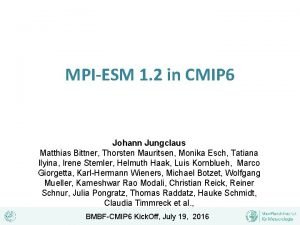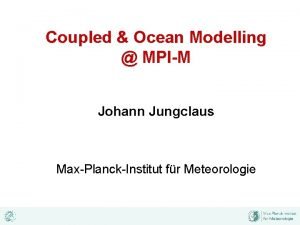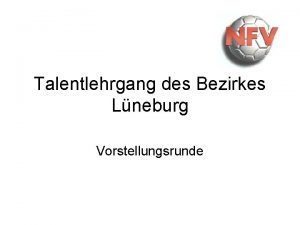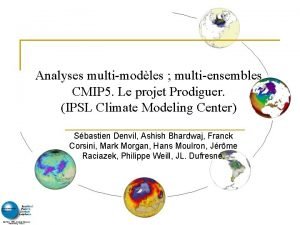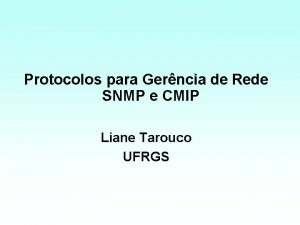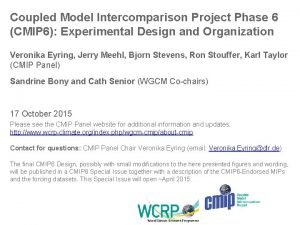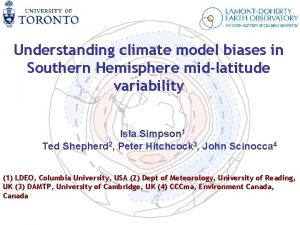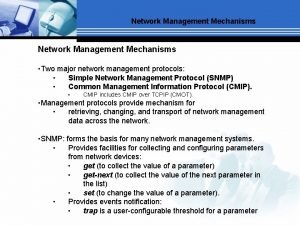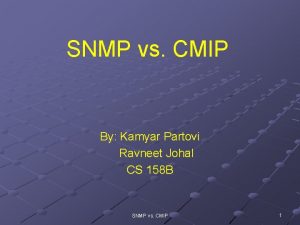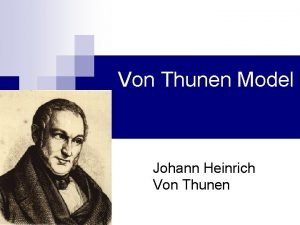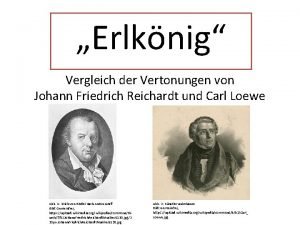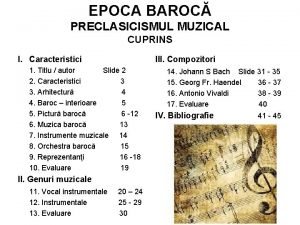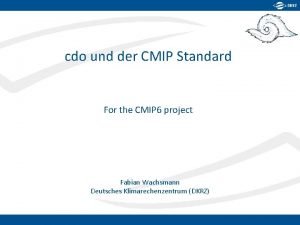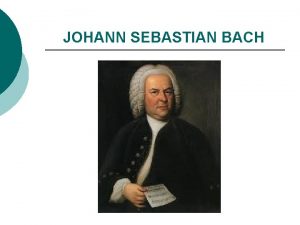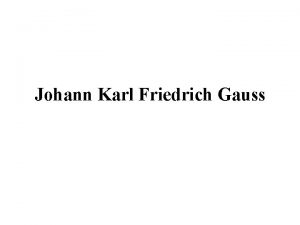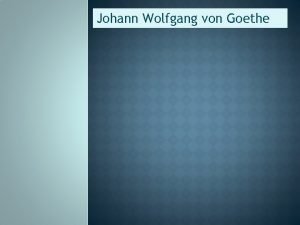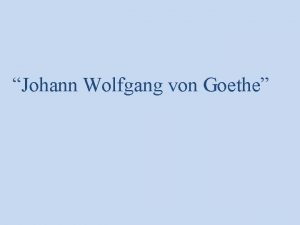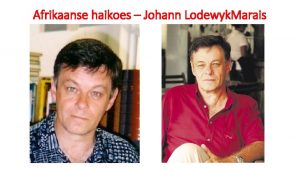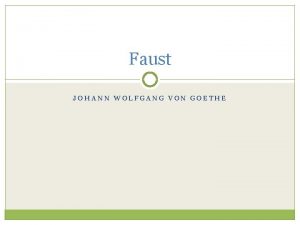MPIESM 1 2 in CMIP 6 Johann Jungclaus



















- Slides: 19

MPI-ESM 1. 2 in CMIP 6 Johann Jungclaus Matthias Bittner, Thorsten Mauritsen, Monika Esch, Tatiana Ilyina, Irene Stemler, Helmuth Haak, Luis Kornblueh, Marco Giorgetta, Karl-Hermann Wieners, Michael Botzet, Wolfgang Mueller, Kameshwar Rao Modali, Christian Reick, Reiner Schnur, Julia Pongratz, Thomas Raddatz, Hauke Schmidt, Claudia Timmreck et al. , BMBF-CMIP 6 Kick. Off, July 19, 2016

MPI- ESM MPI-ESM 1. 2 LR 1. 2 H R

MPI-ESM 1. 2 code development has been frozen on 19 June 2015 MPI-ESM 1. 2 -LR officially released 15 January 2016 HR in preparation MPI-ESM 1. 2 resolutions versions not “officially” supported HR LR CR XR atmospher T 127 e T 63 T 31 T 255 ocean GR 15 GR 30 TP 04/TP 6 M TP 04

MPI-ESM 1. 2 ECHAM 6. 3: • Monte-Carlo independent column approximation (Mc. ICA) radiation scheme [option: spectral sampling in time] • Bug fixes for energy conservation in atmospheric physics • Bug fix for cloud cover scheme • Activated stratocumulus parameterisation JSBACH: • improved hydrology and soil model based on 5 -pool model YASSO HAMOCC: ▪ sinking velocity as function of depth ▪ Prognostic nitrogen fixers:

MPI-ESM 1. 2 Current status HR (ECHAM 6. 3 T 127 L 95 MPIOM 1. 65 TP 04/L 40) : tuned set-up; CMIP 5 -type DECK runs without Dyn. Veg hourly coupling will be the base model for Mi. Klip-II forecast system, DCPPMIP, BMBF CMIP 6 project with DKRZ Performance: 18 yrs/day on 108 nodes

MPI-ESM 1. 2 Current status LR (ECHAM 6. 3 T 63 L 47 MPIOM 1. 65 GR 15/L 40) : tuned set-up; CMIP 5 -type DECK finalised runs by default with Dyn. Veg daily coupling will be used for many MIPs, extended version with interactive carbon cycle and dynamically active OBGC exist, interactive nitrogen cycle and SPITFIRE fire module in preparation Performance: 70 yrs/day on 32 nodes

MPI-ESM 1. 2 Current status XR (ECHAM 6. 3 T 255 L 95 MPIOM 1. 65 TP 04/L 40) : in tuning phase, no DECK planned hourly coupling will be the base model for PRIMAVERA and High. Res. MIP extension to PRIMAVERA “FRONTIER” version with eddyresolving TP 6 M ocean Performance: 6 yrs/day on 256 nodes

MPI-ESM 1. 2 From ECHAM 5 to ECHAM 6. 3 GL: Global NH: Northern Hemisphere SH: Southern Hemisphere TR: Tropics Global

MPI-ESM 1. 2 Resolution matters: HR vs. LR ERA Interim LR bias HR bias Variance of geopotential height at 500 h. Pa

WINTER MPI-ESM 1. 2 SUMMER ERA LR HR % of blocking days per season

MPI-ESM 1. 2 Resolution matters: but notorious biases remain LR bias HR bias Sea surface temperature bias

MPI-ESM 1. 2 total soil C storage Land biogeochemistry: New components: ▪ improved hydrology and soil model based on 5 -pool model YASSO CTL: CMIP 5 version of JSBACH YASSO: JSBACH with YASSO by Lieski et al. mean over yrs 1986– 2005 Goll et al. , GBC, 2015

MPI-ESM 1. 2 Ocean biogeochemistry: New components: ▪ Sinking velocity as function of depth ▪ Prognostic nitrogen fixers const wpoc(z) organic sediment


MPI-ESM 1. 2 adaptation for CMIP 6 Historical forcing: • most CMIP 6 forcing data sets are available (although some not in their final version), some are still pending (ozone) • implementation in models (not only MPI-ESM) revealed issues (e. g. Tropopause boundary for stratospheric aerosols) MPI-ESM 1. 2: • adaptation and testing of CMIP 6 is underway • some delays due to late delivery and technical issues • implementation of CMIP 6 output variables and diagnostics • target: August 30

MIPs @ MPI-M ▪ DECK pi. Control, 1%CO 2 increase/4 x. CO 2 ▪ Historicals (with DKRZ) ▪ Scenario. MIP (with DKRZ) ▪ DCPP: decadal climate prediction ▪ High. Res. Mi. P: AMIP/CPLD up to T 255/TP 6 m ▪ PMIP: Last Millennium, LGM, Mid. Holocene (other PMIP simulations by AWI) ▪ FAFMIP: idealised experiments driven by prescribed fluxes (in cooperation with If. M Hamburg) • SIMIP: sea-ice (diagnostical) • ISMIP: coupled ice sheet models • C 4 MIP: carbon/nitrogen cycle • Vol. MIP: idealised volcanic perturbations • LUMIP: Impacts of land Use/land cover • LS 3 MIP: Land surface models • Geo. MIP: Geoengineering • RFMIP: Radiative Forcing

MIP-related projects MIP Historical: SCENARIOS: DCPP: C 4 MIP: FAFMIP: Geo. MIP: High. Res. MIP: ISMIP 6: LS 3 MIP: LUMIP: PMIP: RFMIP: Vol. MIP: Project(s) DKRZ-BMBF Mi. Klip EU H 2020 CRESCENDO DFG SPP Sea Level DFG SPP 1689, CELARIT H 2020 PRIMAVERA BMBF-Pal. Mod EU H 2020 CRESCENDO BMBF Pal. Mod / JPI: PACMEDY EU FP 7 BACCHUS BMBF Mi. Klip

Summary Development of MPI-ESM 1. 2 for CMIP 6 has been finalized, some technical issues (forcing, diagnostics) still pending MPI-ESM 1. 2 -HR (ECHAM T 127/ MPIOM TP 04) shows considerable improvements over previous CMIP 5 MPI-ESM 1. 2 -HR will be used for experiments in BMBF “DICAD” a low-resolution version (MPI-ESM-1. 2 -LR, ECHAM T 63/ MPIOM GR 1. 5) will be the “workhorse” for many MIPs and a testbed for further developments (e. g. nitrogen cycle) Future developments will focus on finalising MPI-ESM-2 (ICON-based)

 Johann jungclaus
Johann jungclaus Mpim
Mpim Helmut jungclaus
Helmut jungclaus Schams golzari
Schams golzari Nms architecture
Nms architecture Cmip mon compte
Cmip mon compte Cmip protocolo
Cmip protocolo Cmip 6
Cmip 6 Cmip network management
Cmip network management Nudgingprocess
Nudgingprocess Cmip network management
Cmip network management Tao tep
Tao tep Snmp vs cmip
Snmp vs cmip How many seconds in 11 years
How many seconds in 11 years Johann carolus
Johann carolus Von thunen model
Von thunen model Johann friedrich reichardt kompositionen
Johann friedrich reichardt kompositionen Johann sebastian bach kindheit
Johann sebastian bach kindheit Reprezentanti ai barocului in pictura
Reprezentanti ai barocului in pictura Obama bush verwandt
Obama bush verwandt
